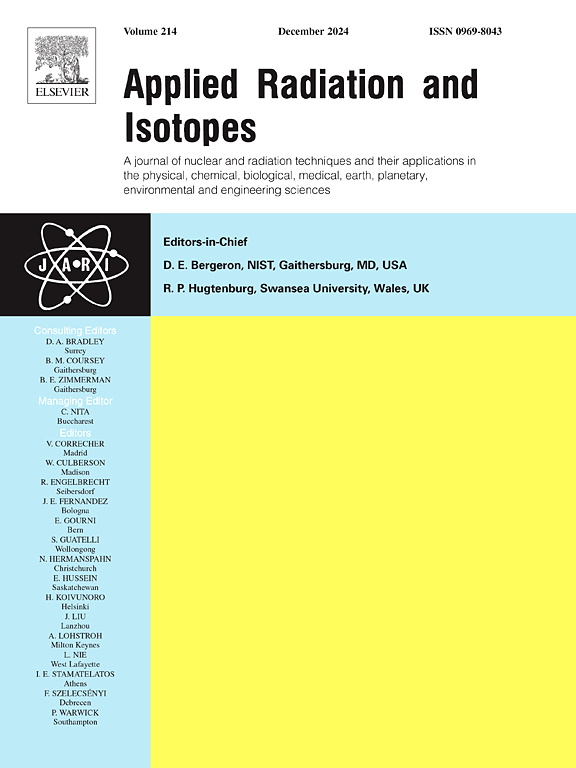利用伽马和α光谱法优化了各种放射性废物的总α测量
IF 1.6
3区 工程技术
Q3 CHEMISTRY, INORGANIC & NUCLEAR
引用次数: 0
摘要
α辐射源浓度的测定对于确保放射性废物处理的安全性和合规性至关重要。本研究通过选择合适的校准曲线,利用伽马和α光谱法优化放射性废物的总α测量。当应用单一的质量效率曲线时,例如基于241Am的质量效率曲线,由于缺乏对α发射体组成的先验知识,通常会导致α发射体的总活性与所有α发射体的总活性之间的差异。为了解决这个问题,我们重新访问了伽马谱数据,将废物样品分为主要铀和其他组,前者采用天然铀校准,后者采用241Am校准。该方法修正了主铀样品中被低估的总α活度,并从α光谱中得出了总α活度与α活度总和之间更好的相关性。本文章由计算机程序翻译,如有差异,请以英文原文为准。
Leveraging gamma and alpha spectrometry optimizes gross alpha measurements for miscellaneous radioactive waste
Determination of alpha emitter concentration is crucial for ensuring safety and compliance in radioactive waste disposal. This study uses gamma and alpha spectrometry to optimize gross alpha measurements for radioactive waste by selecting appropriate calibration curves. The lack of a priori knowledge about the compositions of alpha emitters often results in discrepancies between the gross alpha activities and the summed activities of all alpha emitters when a single mass efficiency curve, such as based on 241Am, is applied. We addressed this by revisiting gamma spectrometric data to categorize waste samples into uranium-major and the other groups, applying natural uranium calibration for the former and 241Am calibration for the latter. This approach corrected the underestimated gross alpha activities of the uranium-major samples and derived a better correlation between gross alpha activities and alpha activity sums from the alpha spectrometry.
求助全文
通过发布文献求助,成功后即可免费获取论文全文。
去求助
来源期刊

Applied Radiation and Isotopes
工程技术-核科学技术
CiteScore
3.00
自引率
12.50%
发文量
406
审稿时长
13.5 months
期刊介绍:
Applied Radiation and Isotopes provides a high quality medium for the publication of substantial, original and scientific and technological papers on the development and peaceful application of nuclear, radiation and radionuclide techniques in chemistry, physics, biochemistry, biology, medicine, security, engineering and in the earth, planetary and environmental sciences, all including dosimetry. Nuclear techniques are defined in the broadest sense and both experimental and theoretical papers are welcome. They include the development and use of α- and β-particles, X-rays and γ-rays, neutrons and other nuclear particles and radiations from all sources, including radionuclides, synchrotron sources, cyclotrons and reactors and from the natural environment.
The journal aims to publish papers with significance to an international audience, containing substantial novelty and scientific impact. The Editors reserve the rights to reject, with or without external review, papers that do not meet these criteria.
Papers dealing with radiation processing, i.e., where radiation is used to bring about a biological, chemical or physical change in a material, should be directed to our sister journal Radiation Physics and Chemistry.
 求助内容:
求助内容: 应助结果提醒方式:
应助结果提醒方式:


